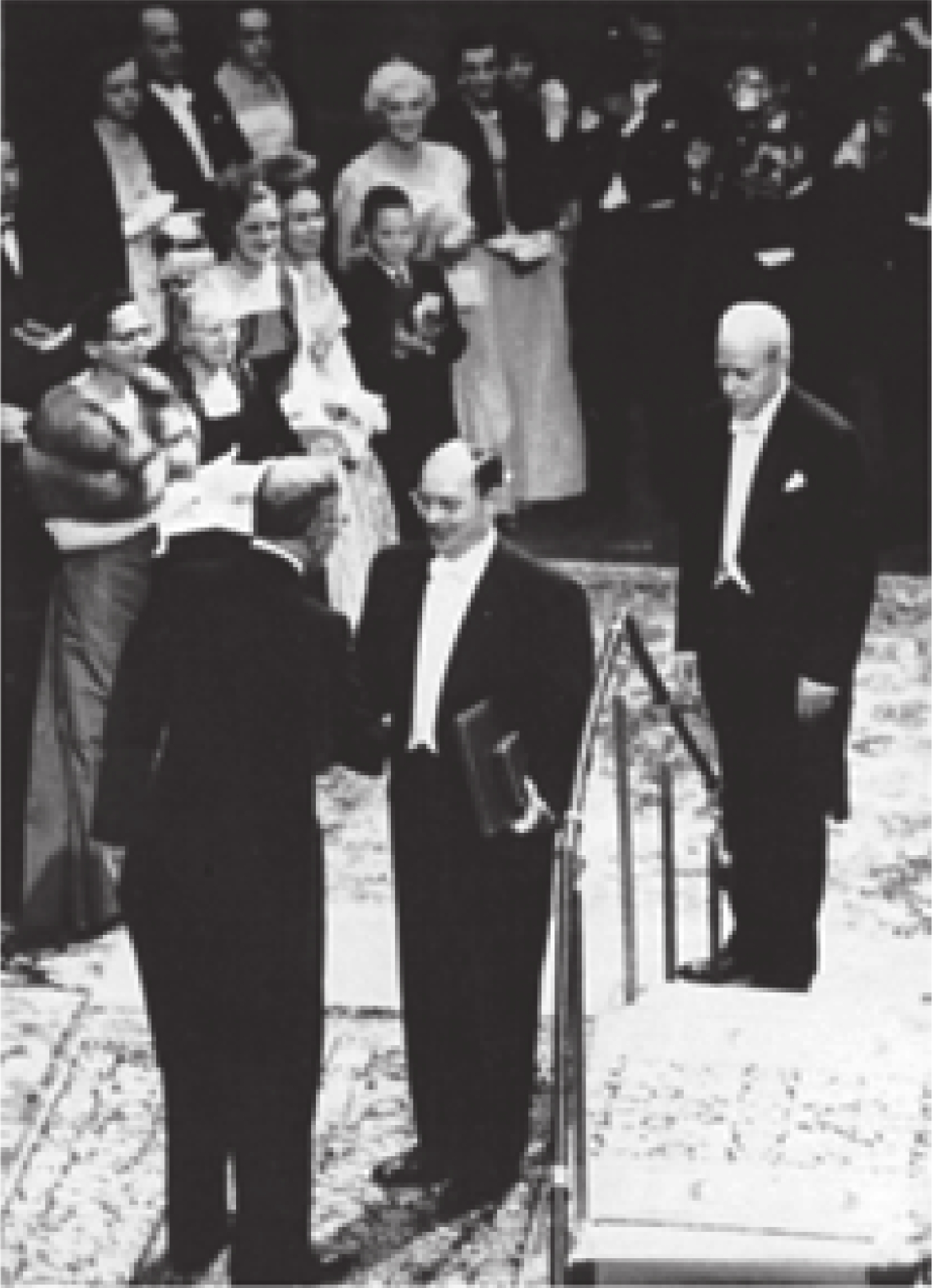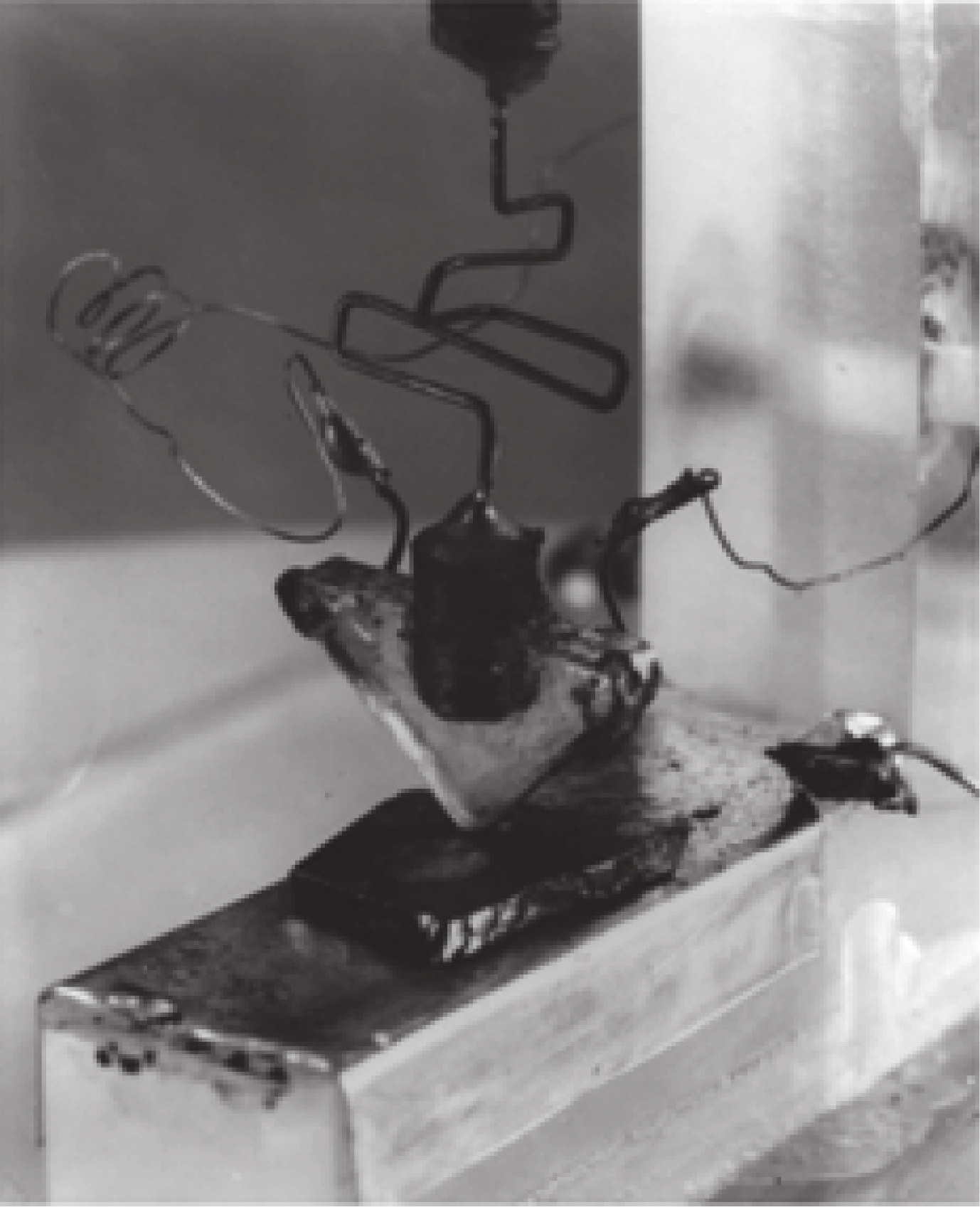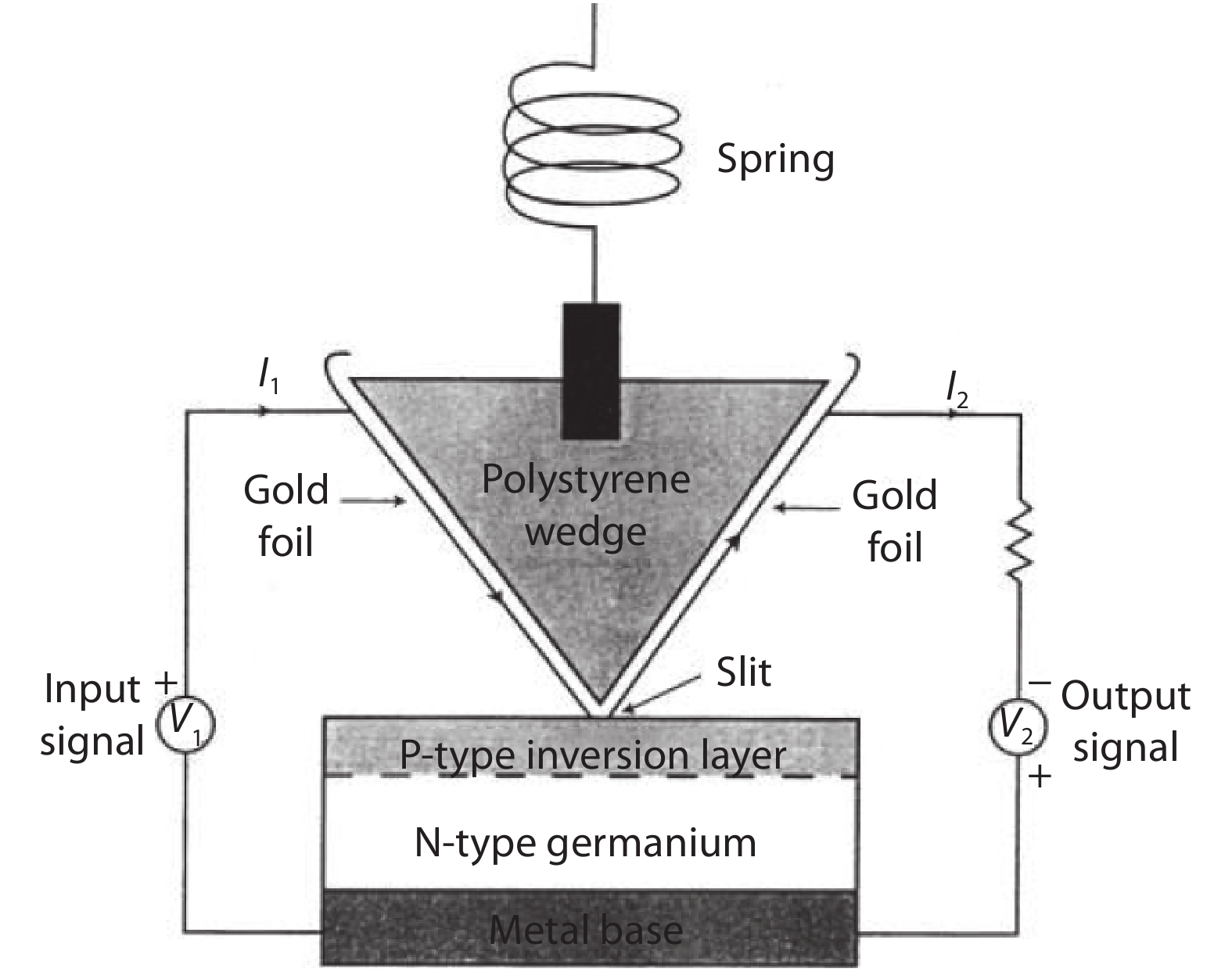Once of most remarkable scientific inventions that has influenced our daily lives as well technological developments all over the world is the “transistor”. Being invented in 1947 as a point contact transistor, it has now become an integral constituent of modern semiconductor industry with global estimated sales 477.9 billion US dollars in 2018[1].
John Bardeen along with William Bradford Shockley and Walter Houser Brattain was awarded Nobel prize in Physics on 10th December 1956 for their “investigations on semi-conductors and the discovery of the transistor effect”[2]. Fig. 1 shows John Bardeen receiving the Nobel Prize in 1956[2]. Fig. 2 shows the first point contact transistor at the Bell laboratories[2]. A gold strip is wrapped around polystyrene wedge which is pressed to the germanium slab. Fig. 3 schematically illustrates the working of the point contact transistor. According to the diagram when current I1 passes through the input circuit, it generates holes in a p-type inversion layer, and it modulates current I2[4].



January is the month in which John Bardeen, one of the inventors of the transistor passed away (30 January 1991)[2]. Therefore, we pay tribute to John Bardeen, a genius Physicist and inventor. He was known as brilliant, quiet, generous, visionary, thoughtful and remarkable among his friends[5]. His elder brother William, his wife Jane and his colleague Walter Brattain helped him in communication as he used to be quieter and reserved[2].
He was born in Madison, Wisconsin, USA on 23 May 1908. He attended a high school in Wisconsin and then completed his BS and MS degrees in Electrical Engineering from the University of Wisconsin in 1928 and 1929 respectively[6]. Then he moved on to Gulf research labs in Pittsburg as geophysicist to work on oil exploration. He then went to join the Princeton’s graduate program and completed his PhD on work function of metals under the supervision of Eugene Wigner in 1936[6]. In his career, he worked in various capacities at Harvard University, University of Minnesota, and Naval Ordnance Laboratory before moving to Bell Telephone Laboratories in 1945. He worked there until 1951. Finally, he served University of Illinois from 1951 to 1975 as professor of Electrical Engineering[2, 6].
During his career he worked on theory of solids (for example, electronic behavior of metals, semiconductor surface properties, theory of diffusion of atoms in crystals and quasi-one-dimensional metals). He proved himself a genius and has greater and longer lasting impact on semiconductor physics research. He won second Nobel prize in Physics in 1972[4, 5]. He shared this prize with Leon Neil Cooper and John Robert Schrieffer for their work on developing the Bardeen–Cooper–Schrieffer (BCS) theory of superconductivity.
By winning two Nobel prizes, he proved himself to be one of the top visionary semiconductor physicists. His discoveries changed the world. The BCS theory helped in understanding superconductivity as well nuclear physics, particle physics and astrophysics. The invention of transistor made possible our many daily life electronic gadgets such as computers, cell phones, fax machines, digital cameras and multimedia projectors and we cannot think of living without these gadgets.




 DownLoad:
DownLoad:

 DownLoad:
DownLoad:













 DownLoad:
DownLoad:






